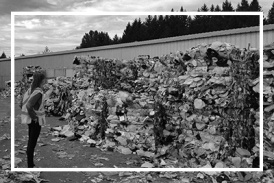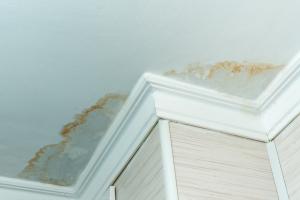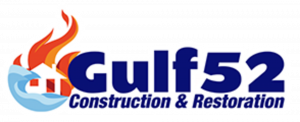Understanding How Water Damage Can Lead to Structural Issues in Residential Properties
Earl Carr, Jr., president of Gulf 52 in Hammond, Louisiana, emphasizes the long-term implications of untreated water damage and the need for thorough remediation.
“Water affects materials on a microscopic level before any visible signs appear. Moisture trapped behind walls, under flooring, or in crawl spaces gradually weakens structural components and fosters decay. What begins as a minor leak can eventually become a threat to the building’s integrity,” said Carr.
The Hidden Progression of Water Damage
Water damage is not always immediately apparent. Leaks from roofing, plumbing, or exterior drainage can infiltrate wall cavities, flooring systems, and insulation without triggering obvious signs. Over time, saturation leads to wood rot, rusted fasteners, delamination of engineered lumber, and warping of critical framing members.
Moisture accumulation is particularly damaging to wood framing and subfloor systems. Wood is highly susceptible to fungal decay when its moisture content remains elevated over an extended period. As decay progresses, the affected materials lose their load-bearing capacity, increasing the risk of sagging floors, cracking drywall, or framing failure.
In homes with slab foundations, water intrusion beneath the slab may erode the soil or compromise compaction, leading to uneven settling or slab cracking. These shifts can create stress points throughout the structure, causing doors to misalign, windows to stick, or floors to become uneven.
Weakening of Load-Bearing Components
Excessive moisture around load-bearing components, including sill plates, beams, and columns, can lead to gradual loss of support. As structural wood rots, it compresses under the weight of the home. This condition creates visible signs such as bowed walls, ceiling separations, and unlevel surfaces.
In two-story homes, compromised framing on the first floor may result in structural misalignment in the upper story. This affects drywall seams, flooring transitions, and roof trusses. Repairing these types of damages often requires removing finishes and reinforcing the structure from within—making early intervention critical.
Mold and Secondary Structural Degradation
Water damage frequently results in mold growth, which further deteriorates organic materials. While mold is primarily viewed as a health concern, it also breaks down cellulose-based products like wood, drywall, and insulation. In areas with prolonged exposure, structural sheathing and studs can soften and weaken, losing their design load capacity.
In addition, mold may grow undetected in unconditioned spaces such as attics, basements, and crawl spaces. Over time, this creates widespread material breakdown that undermines the entire framing system.
If remediation efforts fail to remove both the water source and the fungal contamination, the structural degradation continues even after the initial incident appears resolved.
Impact on Fasteners and Metal Connectors
Framing connectors, nails, screws, and structural brackets are all vulnerable to corrosion when exposed to consistent moisture. This corrosion weakens the mechanical bond between structural elements. In coastal or humid environments, galvanic corrosion may also occur when mixed metals interact under moist conditions.
Morgan Thomas
Rhino Digital, LLC
+1 504-875-5036
email us here
Visit us on social media:
Facebook
Legal Disclaimer:
EIN Presswire provides this news content "as is" without warranty of any kind. We do not accept any responsibility or liability for the accuracy, content, images, videos, licenses, completeness, legality, or reliability of the information contained in this article. If you have any complaints or copyright issues related to this article, kindly contact the author above.
Huntington’s Disease: Charting a New Path with Disease-Modifying Therapies and Strategic Innovation
Paramount Wellness Retreat Addresses the Link Between ADHD and Addiction with Specialized Dual Diagnosis Treatment
Aspire Systems wins Silver Stevie® Award in 2025 American Business Awards®
Kalendarium
Więcej ważnych informacji
 Jedynka Newserii
Jedynka Newserii

 Jedynka Newserii
Jedynka Newserii

Handel

Ze względu na różnice w cenach surowce wtórne przegrywają z pierwotnymi. To powoduje problemy branży recyklingowej
Rozporządzenie PPWR stawia ambitne cele w zakresie wykorzystania recyklatów w poszczególnych rodzajach opakowań. To będzie oznaczało wzrost popytu na materiały wtórne pochodzące z recyklingu. Obecnie problemy branży recyklingu mogą spowodować, że popyt będzie zaspokajany głównie przez import. Dziś do dobrowolnego wykorzystania recyklatów nie zachęcają przede wszystkim ceny – surowiec pierwotny można kupić taniej niż ten z recyklingu.
Przemysł spożywczy
Rośnie presja konkurencyjna na unijne rolnictwo. Bez rekompensat sytuacja rolników może się pogarszać

Rolnictwo i żywność, w tym rybołówstwo, są sektorami strategicznymi dla UE. System rolno-spożywczy, oparty na jednolitym rynku europejskim, wytwarza ponad 900 mld euro wartości dodanej. Jego konkurencyjność stoi jednak przed wieloma wyzwaniami – to przede wszystkim eksport z Ukrainy i niedługo także z krajów Mercosur, a także presja związana z oczekiwaniami konsumentów i Zielonym Ładem. Bez rekompensat rolnikom może być trudno tym wyzwaniom sprostać.
Transport
Infrastruktury ładowania elektryków przybywa w szybkim tempie. Inwestorzy jednak napotykają szereg barier

Liczba punktów ładowania samochodów elektrycznych wynosi dziś ok. 10 tys., a tempo wzrostu wynosi ok. 50 proc. r/r. Dynamika ta przez wiele miesięcy była wyższa niż wyniki samego rynku samochodów elektrycznych, na które w poprzednim roku wpływało zawieszenie rządowych dopłat do zakupu elektryka. Pierwszy kwartał br. zamknął się 22-proc. wzrostem liczby rejestracji w ujęciu rocznym, ale kwiecień przyniósł już wyraźne odbicie – o 100 proc.
Partner serwisu
Szkolenia

Akademia Newserii
Akademia Newserii to projekt, w ramach którego najlepsi polscy dziennikarze biznesowi, giełdowi oraz lifestylowi, a także szkoleniowcy z wieloletnim doświadczeniem dzielą się swoją wiedzą nt. pracy z mediami.










.gif)

 |
| |
| |
|